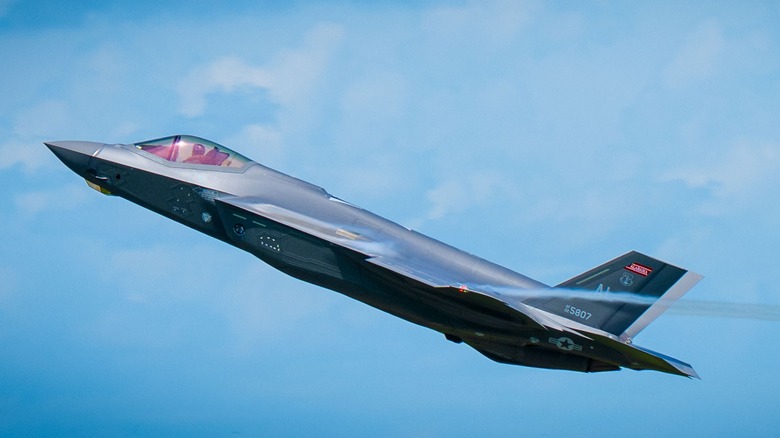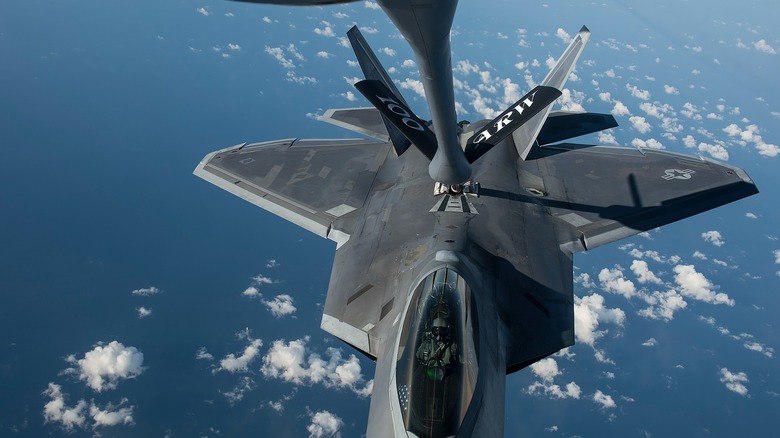Can An F-22 Raptor Fly Across The Atlantic?
The F-22 Raptor is one of the most advanced fighter jets in existence, and it's also the first 5th-generation fighter to take to the skies. A lot of time, money, and innovation went into developing it for the U.S. Air Force, and while it's been flying for over 20 years, the F-22 Raptor has yet to achieve a kill in combat. That doesn't make it any less lethal than any other fighter. Should the F-22 have a chance to take out an enemy aircraft, the odds are definitely in the Raptor's favor.
Most of the attention the F-22 receives involves its high-end stealth technology, the myriad of weapons it can carry, and the fact that it's one of the few fighter jets the U.S. refuses to export. Additional areas of interest deal with speed and range, and the F-22 is no slouch in either area. The aircraft carries 18,000 pounds of fuel internally, but that number increases to 26,000 pounds with two external tanks. It can reach Mach 2 (1,535 mph) with its supercruise ability and fly for 1,850 miles with external wing fuel tanks attached.
That's decidedly not enough to cross the Atlantic Ocean. Depending on where they take off and land, the distance between the United States and Europe or Africa is many thousands of miles. Despite the distance, F-22s have crossed the Atlantic many times. The first such trans-Atlantic crossing occurred in July 2008, when three F-22s traveled from Royal Air Force Fairford, England, to Langley Air Force Base, Virginia, a distance of approximately 3,600 miles.
Transatlantic crossings are possible with some help
While it's true that many fighter jets hitch a ride on aircraft carriers, that's not true of most Air Force planes. The U.S. Navy doesn't fly the F-22, so the best way for them to get across the Atlantic Ocean is under their own power. Since they can't make the 3,600-mile distance on their fuel tanks alone, they require some assistance. During that first trans-Atlantic deployment in 2008, three F-22s were assisted by a KC-10 Extender from the 70th Air Refueling Squadron of Travis Air Force Base.
The flying tankers topped off the F-22s' tanks, and they continued their flight. Other airborne tankers, like the long-serving KC-135s, can also refuel an F-22 in flight. Given the distance involved, whichever airborne tanker is dispatched to refuel an F-22 would have to do so at least twice for a trans-Atlantic crossing, though it doesn't take long. To refuel an F-22, a tanker can transfer 1,000 pounds of fuel in only 60 seconds.
To fully fill the internal and external fuel tanks, the tanker pilots and the F-22 pilot must fly at the same speed and altitude for several minutes during refueling while remaining within 100 feet of one another. This is accomplished at speeds of 400 mph, and despite the complex process, numerous systems are in place to ensure it all proceeds as smoothly as possible. While incapable of crossing without a tanker, the F-22 has no problem doing so when they're available for refueling.

